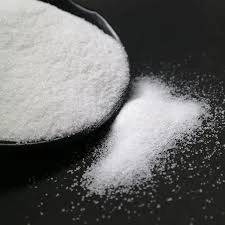Chemicals Used to Treat Low pH Levels
Low pH levels in various environments, such as soil, water, and industrial processes, can pose significant challenges. Understanding the chemicals employed to remediate low pH levels is essential for maintaining ecological balance and ensuring the efficacy of agricultural and industrial operations. This article explores several key chemicals commonly used to raise pH levels and their applications across different domains.
Importance of pH Management
Before delving into chemical treatments, it's important to understand why pH management is crucial. A low pH, which indicates high acidity, can adversely affect plant growth, aquatic life, and even the structural integrity of materials. For instance, acidic soil can hinder nutrient availability for crops, while low pH levels in water bodies can lead to toxicity for fish and other aquatic organisms. Consequently, managing and correcting low pH levels through chemical treatments is vital.
Common Chemicals Used
1. Lime (Calcium Carbonate) One of the most common methods to increase pH levels is the application of lime. Calcium carbonate is widely used in agriculture to neutralize acidic soils. It reacts with existing acids in the soil, effectively raising pH levels and providing essential calcium, which promotes healthy plant growth. Depending on the soil's current pH and the desired target, different forms of lime (such as dolomitic lime, which also supplies magnesium) may be used.
2. Sodium Bicarbonate Sodium bicarbonate, or baking soda, is another effective agent for adjusting pH levels, especially in water treatment processes. It is often used to raise the pH in swimming pools and aquaculture systems. With its mild alkalinity, sodium bicarbonate can effectively counteract acidity without drastically shifting pH levels, making it a safe choice for delicate ecosystems.
what chemicals are used to treat low ph levels

3. Potassium Carbonate Potassium carbonate is utilized primarily in agricultural settings and water treatment. It serves to increase soil pH while simultaneously supplying potassium—an essential nutrient for plant growth. This dual function makes potassium carbonate exceptionally valuable in managing crop health and productivity.
4. Calcium Hydroxide (Hydrated Lime) Hydrated lime is a more potent alkaline substance compared to calcium carbonate and is frequently used in industrial applications, particularly in waste treatment. It helps neutralize acidic wastewater and balances pH levels before discharging into natural water bodies. However, caution is required when using hydrated lime as its strong alkalinity can lead to rapid increases in pH.
5. Magnesium Hydroxide Known for its buffering capacity, magnesium hydroxide serves a similar function as calcium hydroxide but is often favored in applications requiring a gentler approach to pH correction. It is commonly used in wastewater treatment and can mitigate acid conditions without causing severe fluctuations in pH.
Considerations in Chemical Application
While these chemicals are effective in raising pH levels, their application must be measured and controlled. Over-application can lead to significant pH swings that may harm both soil health and aquatic ecosystems. It is crucial to conduct a thorough analysis of pH levels and other soil or water characteristics before treatment. Environmental regulations and safety precautions should also guide the application of these chemicals to prevent unintended consequences.
Conclusion
Managing low pH levels through chemical treatments is an essential practice in agriculture, water management, and industrial processes. Chemicals like lime, sodium bicarbonate, potassium carbonate, hydrated lime, and magnesium hydroxide play pivotal roles in correcting acidity levels effectively. By utilizing these chemicals appropriately, one can enhance the health of ecosystems, boost agricultural productivity, and ensure the longevity of infrastructure. As environmental sustainability remains a focus, careful consideration and responsible usage of these pH-adjusting agents will be critical for future practices.

